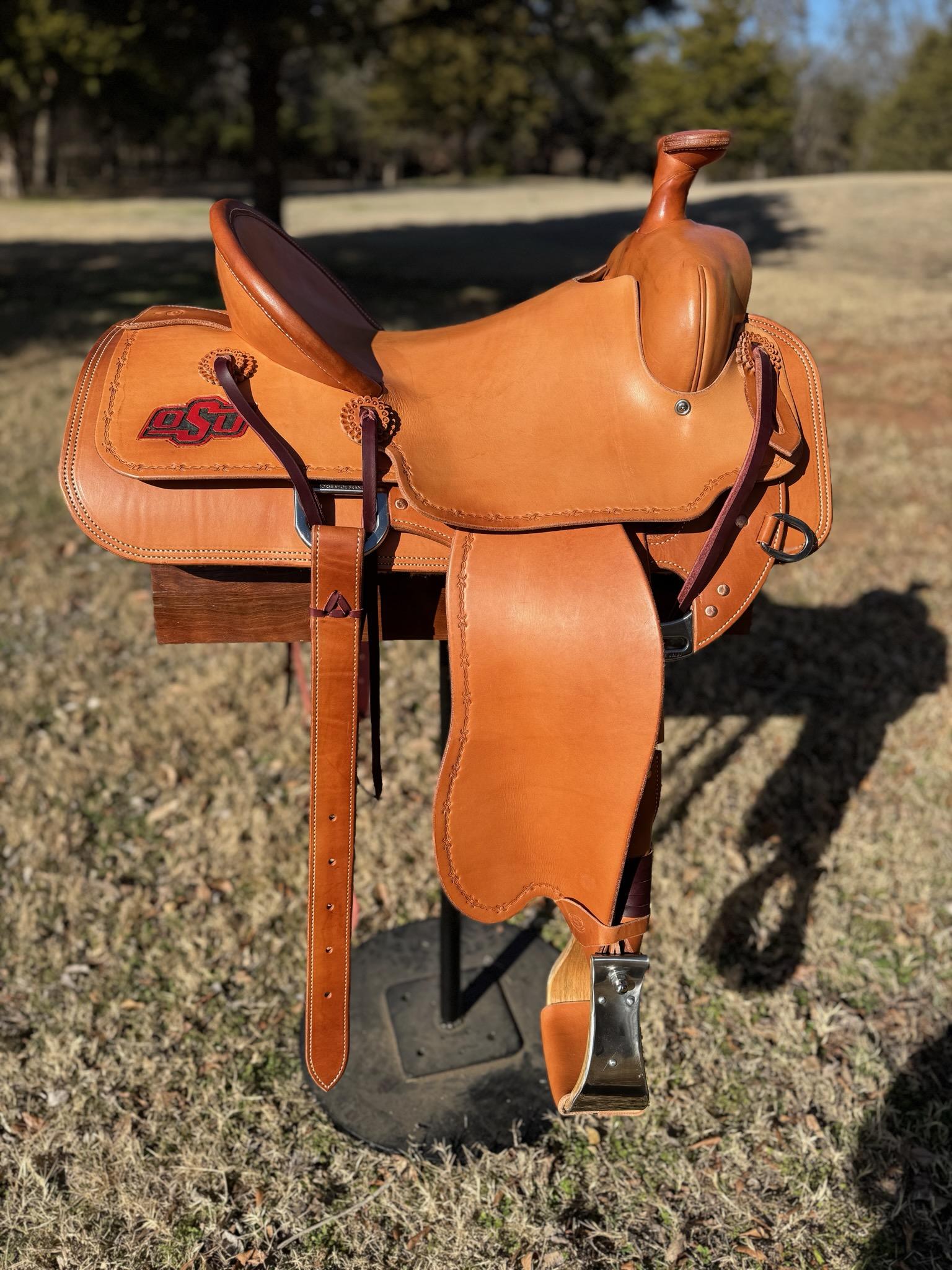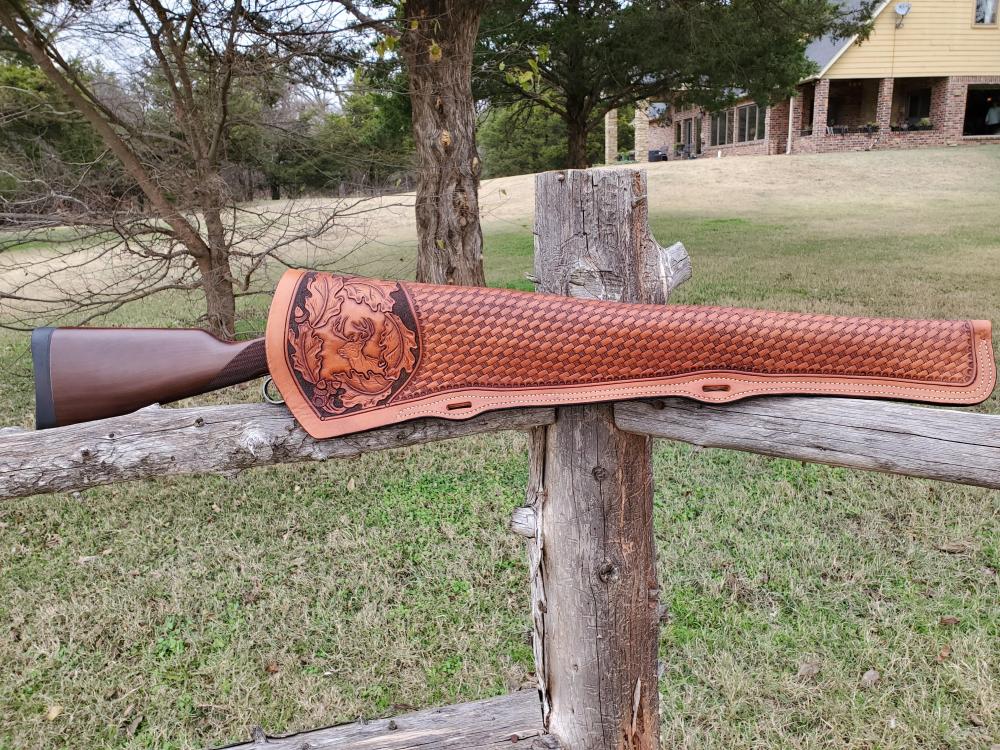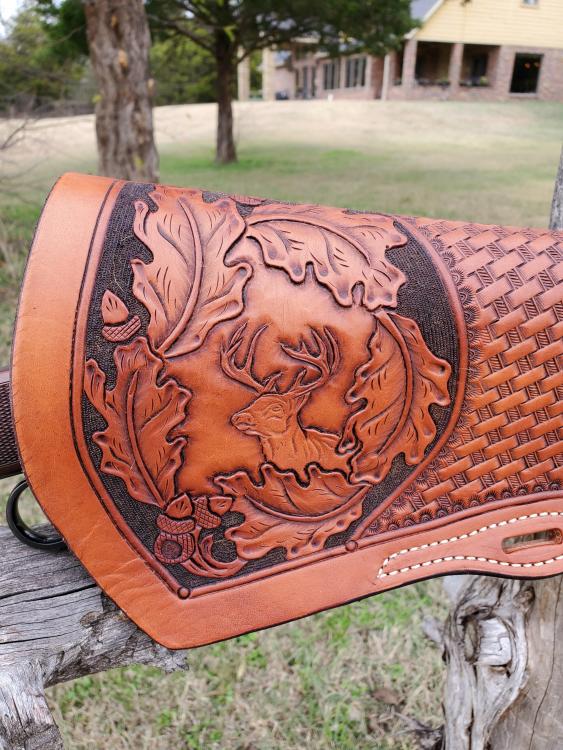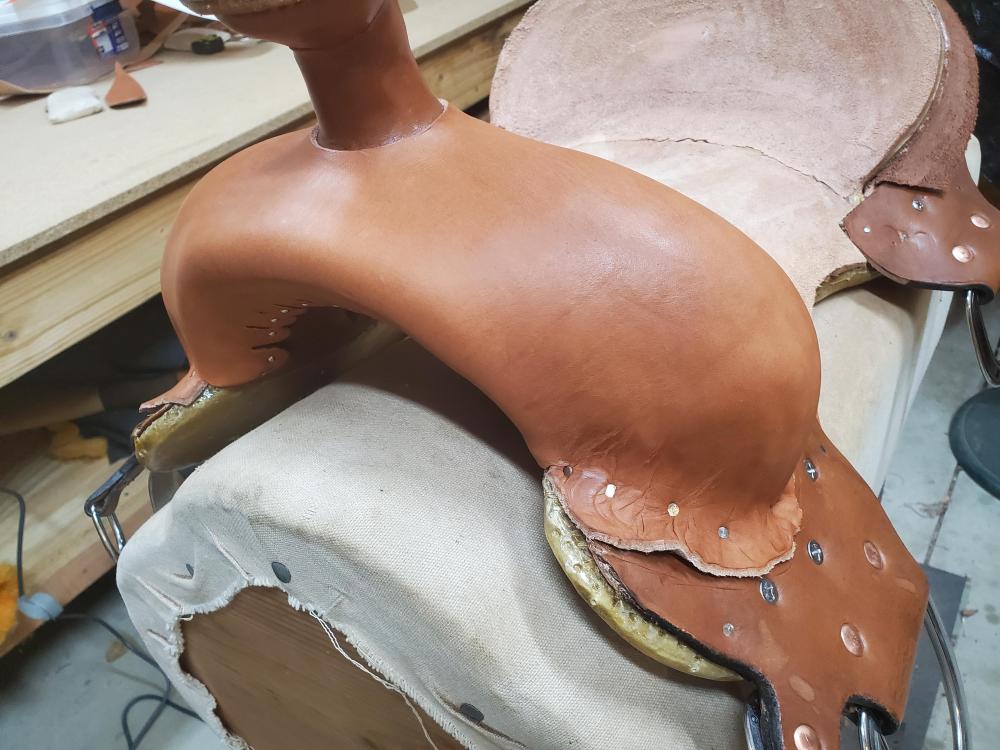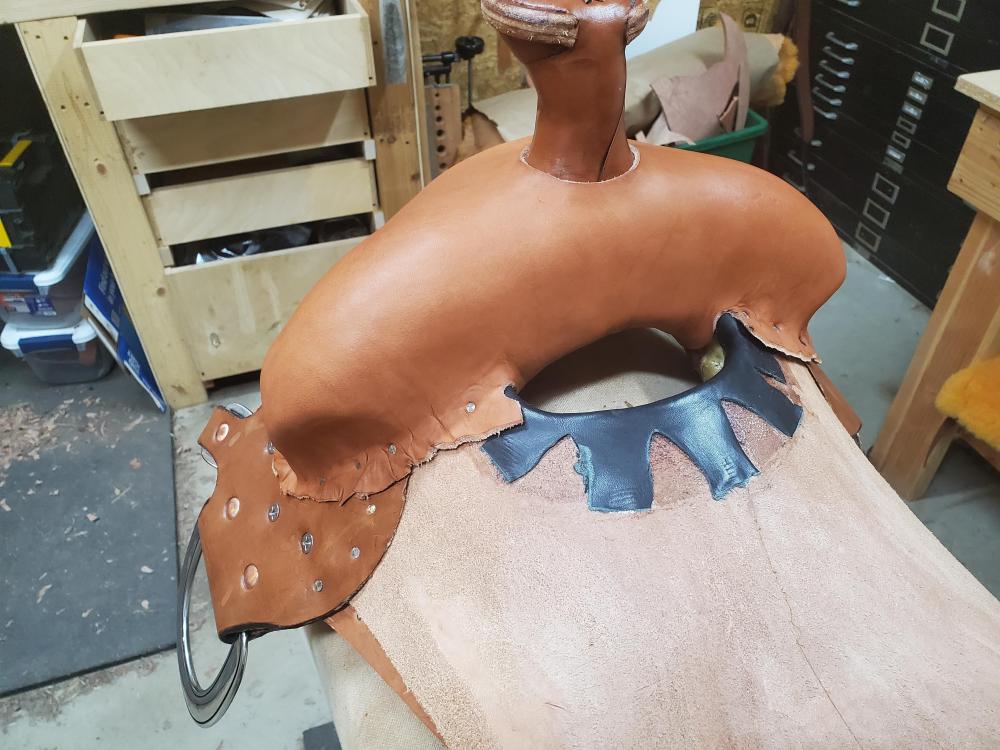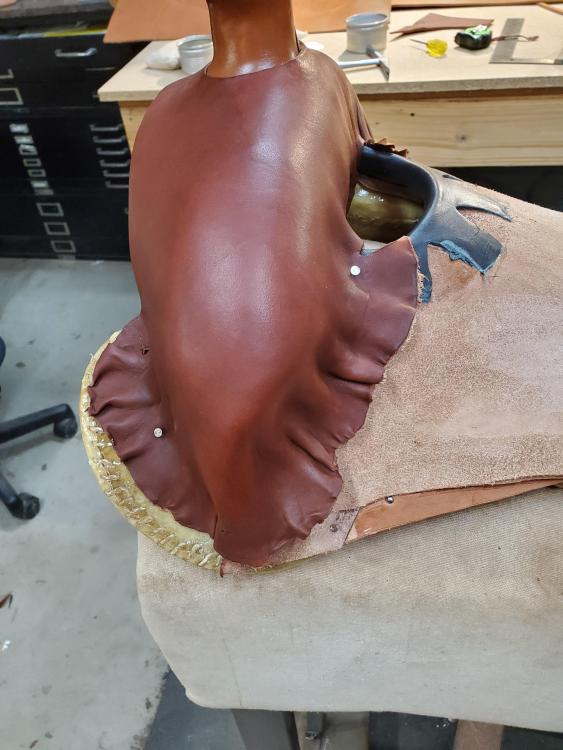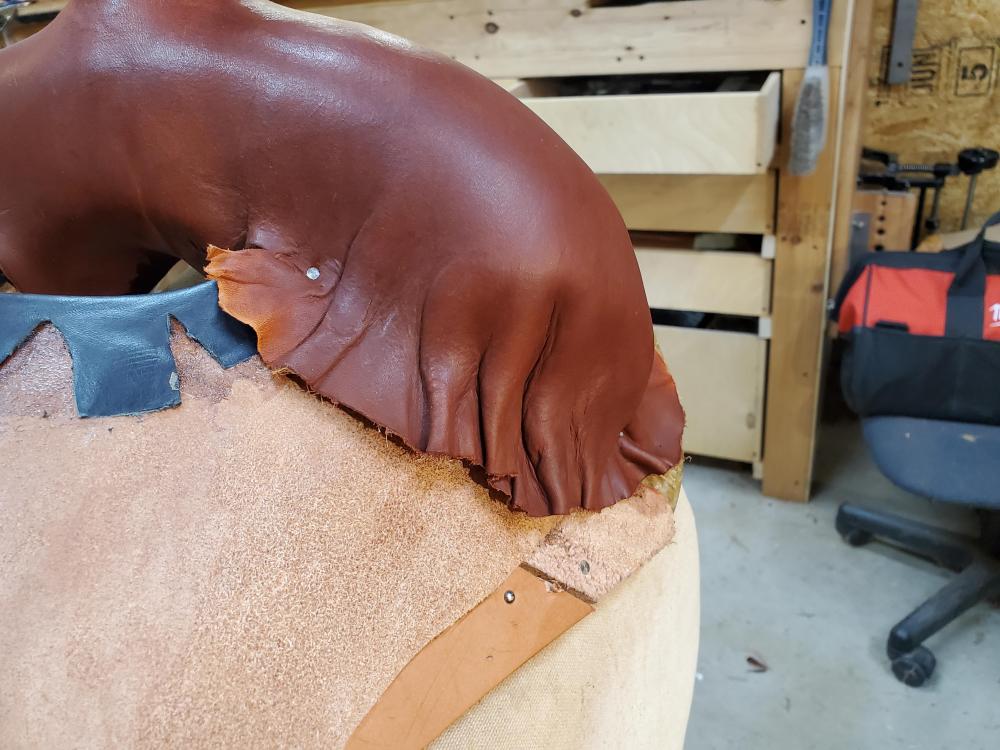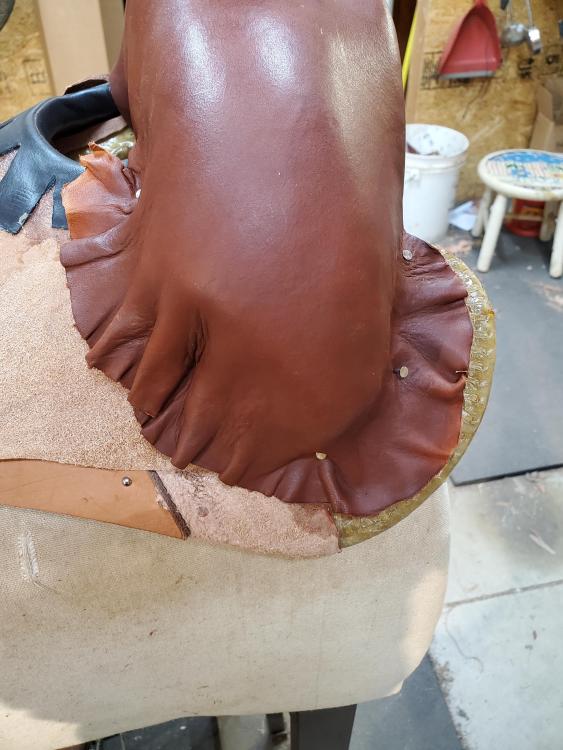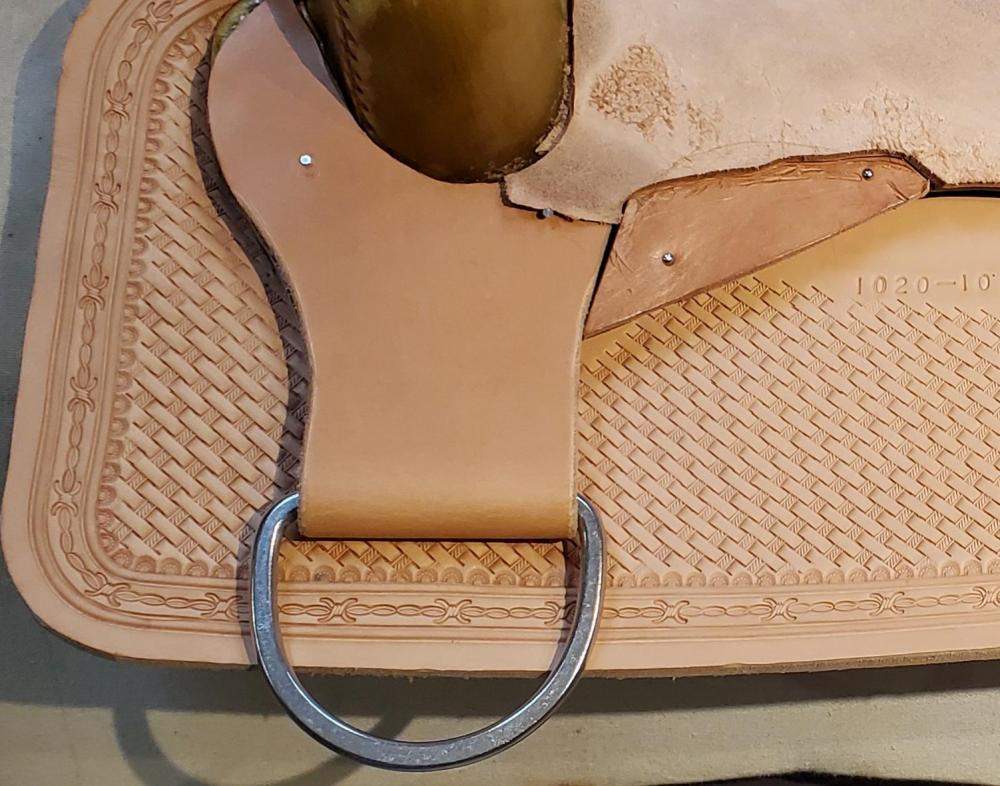-
Posts
491 -
Joined
-
Last visited
Content Type
Profiles
Forums
Events
Blogs
Gallery
Everything posted by rktaylor
-
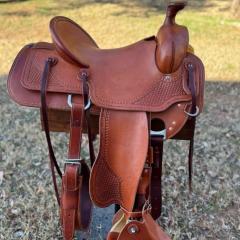
First Scabbard
rktaylor replied to rktaylor's topic in Gun Holsters, Rifle Slings and Knife Sheathes
Thanks for all the compliments. Response to some specific questions are below. Sorry Dwight, I know the description is short. It is really a combination of methods Bruce Johnson describes here. https://leatherworker.net/forum/forum/17-stamping/. I have some photos, but need to write some steps to go with them. I haven't made that effort, because I am not sure if it would add anything to the previous posts. Maybe I'll get to that someday. As was pointed out, it just takes some patience and attention to detail. Plus, I have basket stamps a lot of projects. It is not lined. Its just 13/15 HO saddle skirting. I dyed the bar grounded areas with Cordovan brown and then used Sheridan tan antique on the entire piece. A couple coats of neatsfoot oil and some time in the sun. Dyeing and finishing is not a strength I possess. All is well here @Rbarleatherworks. I hope you are staying safe up north. Thanks to all for the discussion. Randy -

First Scabbard
rktaylor replied to rktaylor's topic in Gun Holsters, Rifle Slings and Knife Sheathes
The short answer is 2. The centerline down the bend is a straight line. I used that to set my angle (I wanted the stamp to be even along that line). I drew a reference line across the area to be tooled at the predetermined angle. Then I work both directions from that line. I try to stay focused on keeping the stamp relative to the centerline. Let me know if that helps. Otherwise, I can probably take some pictures to illustrate the process. It's nothing earth shattering and is used by a lot of people. Randy -
Sometimes I just cover the project with a plastic bag with weights and leave it on my tooling rock. Other times I just wrap the entire project in a plastic bag like tsunkasapa. Randy
-

First Scabbard
rktaylor replied to rktaylor's topic in Gun Holsters, Rifle Slings and Knife Sheathes
Thanks. I think I have about 3-4 hours in tooling. I finished the oak leaves and deer one evening, covered it up and did the basket weave the next day. I took a couple break during the basket weave, but it took about an hour and a half of tooling. It's oak leaves and white tail down here. It might be a little fancy for my Jeep. Randy -

First Scabbard
rktaylor replied to rktaylor's topic in Gun Holsters, Rifle Slings and Knife Sheathes
Thanks for the compliments. Randy -

First Scabbard
rktaylor replied to rktaylor's topic in Gun Holsters, Rifle Slings and Knife Sheathes
Thanks for the compliments. I obviously like basket weave too. I knew it was a lot of area so I used my largest stamp to save some time. Randy -
I bought a new Henry 30-30 and thought it deserved a scabbard. I don't need it for a horse, but it'll come in handy for my Jeep. I used the Springfield Leather pattern. I'll make my own pattern for the next one. Comments and suggestions are welcome. Randy
-
Thanks for the comments. I've had the seat in the back of my mind as well. I'll try to post a picture when it's fit. Randy
-
-
Thanks for all the tips. I have been distracted from this task for a while, but hope to tackle it sometime this week. Randy
-
My plan was to sweat this cover on without a welt or lacing. It's a leg cut Olin Young, 12.5". The leather is from the belly near the shoulder and about 11/12 oz. I wrestled with it more than two hours and was making progress. However, I didn't think I could get all the wrinkles out. Any advice is appreciated. Randy
-
I am just starting #11. Thanks for reviving this thread. It reminds of some things that I've learned and others that should still receive focus. Randy
-
Ed, Thanks for sharing your knowledge and now your work on this forum. There's a lot to like about that saddle. Randy
-
I personally like a little more and consistent rise going toward the swells but that's a preference. Are you following Watt's method on the ground seat? I suppose Stohlman's method isn't a lot different if those are the two resources you are using. While the strainer is the foundation, you can still do a lot of shaping with leather (with a lot of skiving). I fit the liner under the front tabs, but make sure you have enough to stretch over the finished ground seat. Randy
-
I like the photo with the mirror. Seriously Ed, thanks for freely sharing your knowledge. You explain everything so well. Dusty, keep us updated on your progress. RT
-
There may be better methods, but this is what I did on my last saddle with a dee rigging. The riser ends near the bottom of the swell. The rigging is skived to match the riser thickness and then follows the front edge of the stirrup slot. It slides up under the ground seat. This is closer to a full position than 7/8. More experienced makers might frown on this, but it worked for me. Randy
-
I'm going to back up and ask what your rigging plans are. You can't think about this one piece at a time. That's a mistake that I still make on occasion. Randy
-
I think the dotted line on the swells is fine. I would have the riser at least 3/4" wide from the swell to the edge of the bar. That let's you keep the riser at full width along the stirrup slot and skive a transition for the ground seat. Sorry I don't have a photo. Randy
-
I skive along the swells to create a smooth transition. I would arc the riser forward at the bottom to give you something to skive to create a transition there. Just curve it around the swell. I'm sure there are other methods, but that's what I would do. BTW, nice looking tree. Randy
-

aluminum horn repair
rktaylor replied to JanetNorris's topic in Saddle Identification, Restoration & Repair
Janet, Please consider that I am novice at this stuff, but from my perspective it would have to be a pretty good customer or friend, before I would consider the project. I will start by assuming you don't want to tear it down completely and send the tree for repair. If so, I would want to remove the swell cover and get at the heart of the matter. It looks like the metal fractured at the front of the horn, so that could create problems. I believe you can reattach the horn and fiberglass the swells around it. That would give it strength for trail riding, but I would be concerned that someone might try to rope in it. Maybe that's just the people I hang out with. The swell cover also looks damaged, but if you get the horn repaired you can hide that by wrapping the horn with latigo or mule hide. I would also caution that you need to be confident in the repair (even with caveats to the customer) because it is leaving your shop as a repaired saddle. The bottom line is that I would have more time in the saddle than it's likely worth. That's why it would have to be a good friend or customer. Good Luck, Randy -
Like John, my fenders are based on the Harry Adams book, or some variation. I basically have two patterns that look very similar; one is just an inch wider (based on a customer request). Randy
-
I think the 9/10 should be fine. Randy
-
Depending on the size of the hole and leather weight, you may be able to plug it with a leather 'thread'. Use a strip of leather from a stitch groover to thread needle. Pull it through the hole and trim it flush. I've used this on a saddle skirt and it blended in really well. You could find the mistake hole if you knew where to look. Randy
-
Ron, Thanks for the tips. Thankfully it is warming up. I am not built for weather like we experienced. toswood, The breeching strap has a good, round edge and I think it's more flexible than the photo shows. However, I will tell the customer to watch it closely. This is a for a riding mule that likely won't see a lot of action, but it's worth noting. Thanks for the advice. I'll share some pictures with the mule saddled if I get a chance. Randy
-
Ron, Thanks for the tips. I considered both orientations and settled on lengthwise, but am not sure why. I'll think of something to blame it on. I really appreciate your notes. I haven't typed anything yet, but I made a lot of measurements yesterday and will definitely document this project. I plan to deliver and adjust this later in the week, so we'll see how it fits. I am concerned that the straps may be too long. If so, I may just build another spider with new straps. It's all trial and error at my shop. Randy


